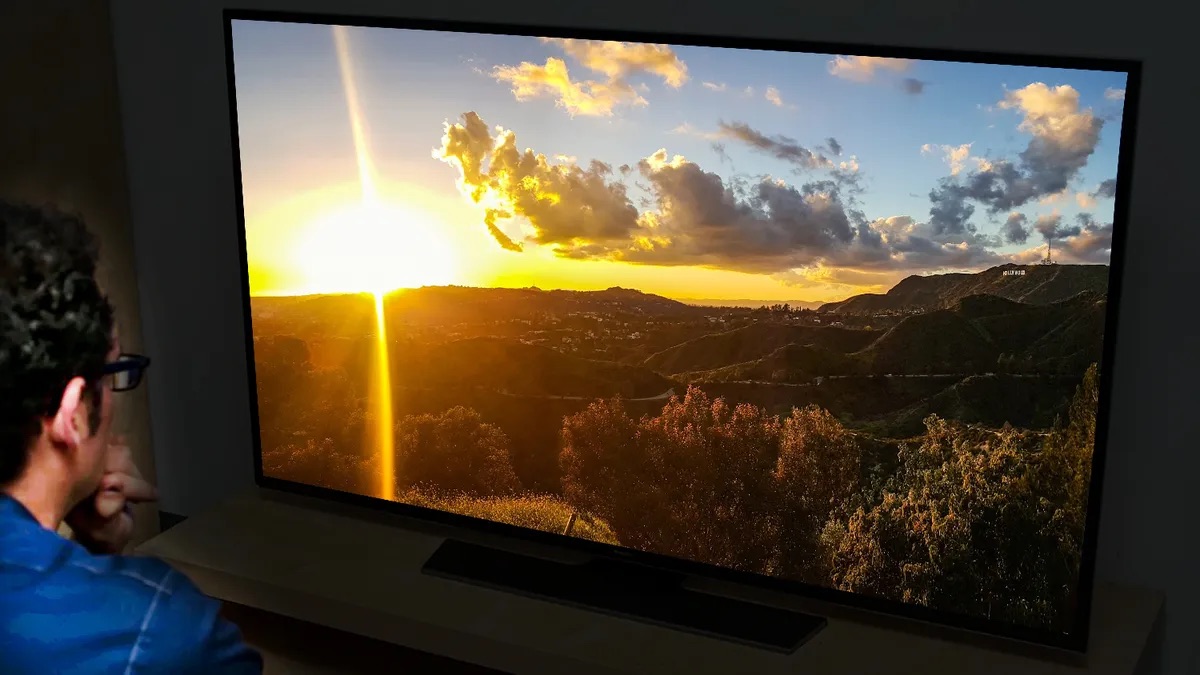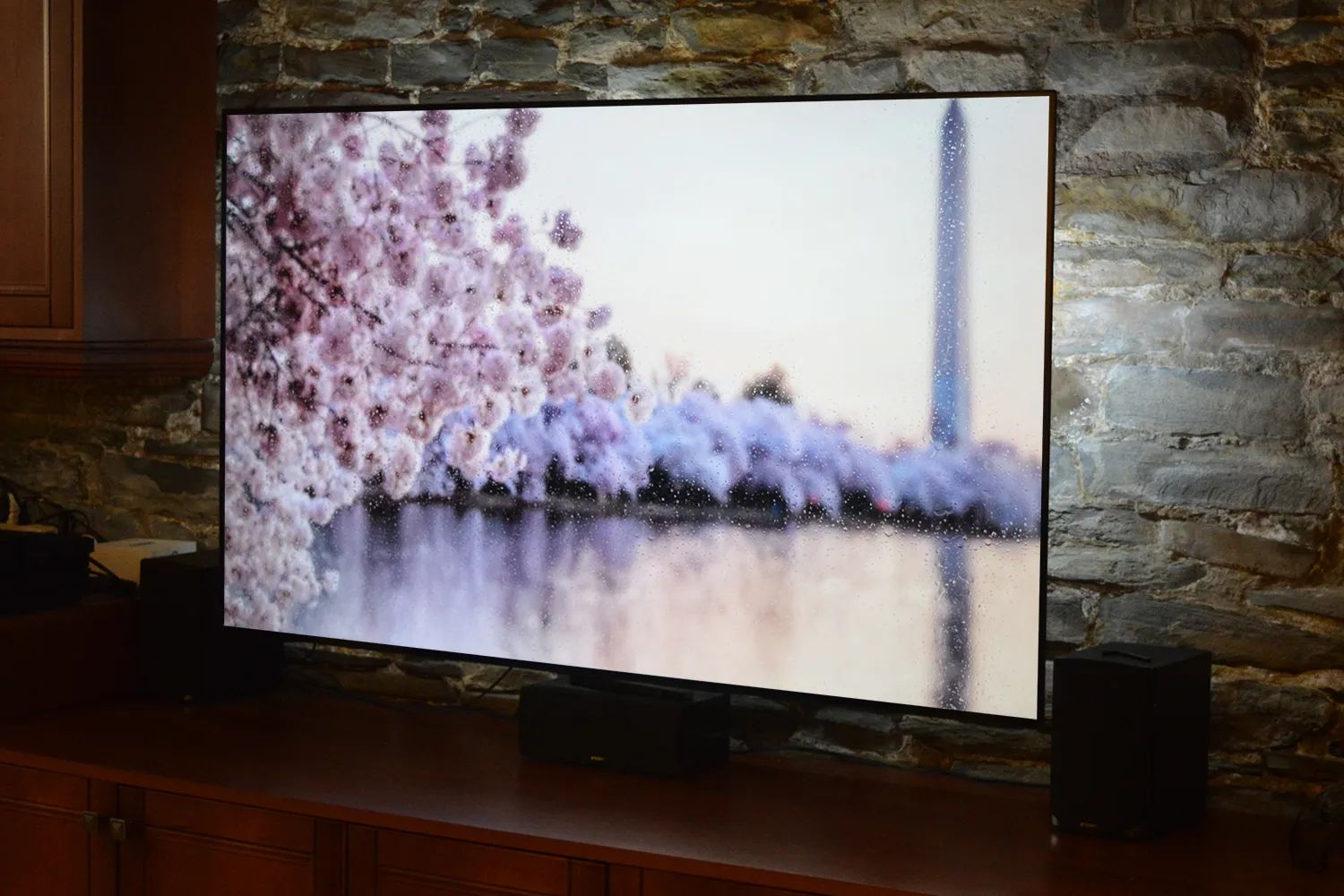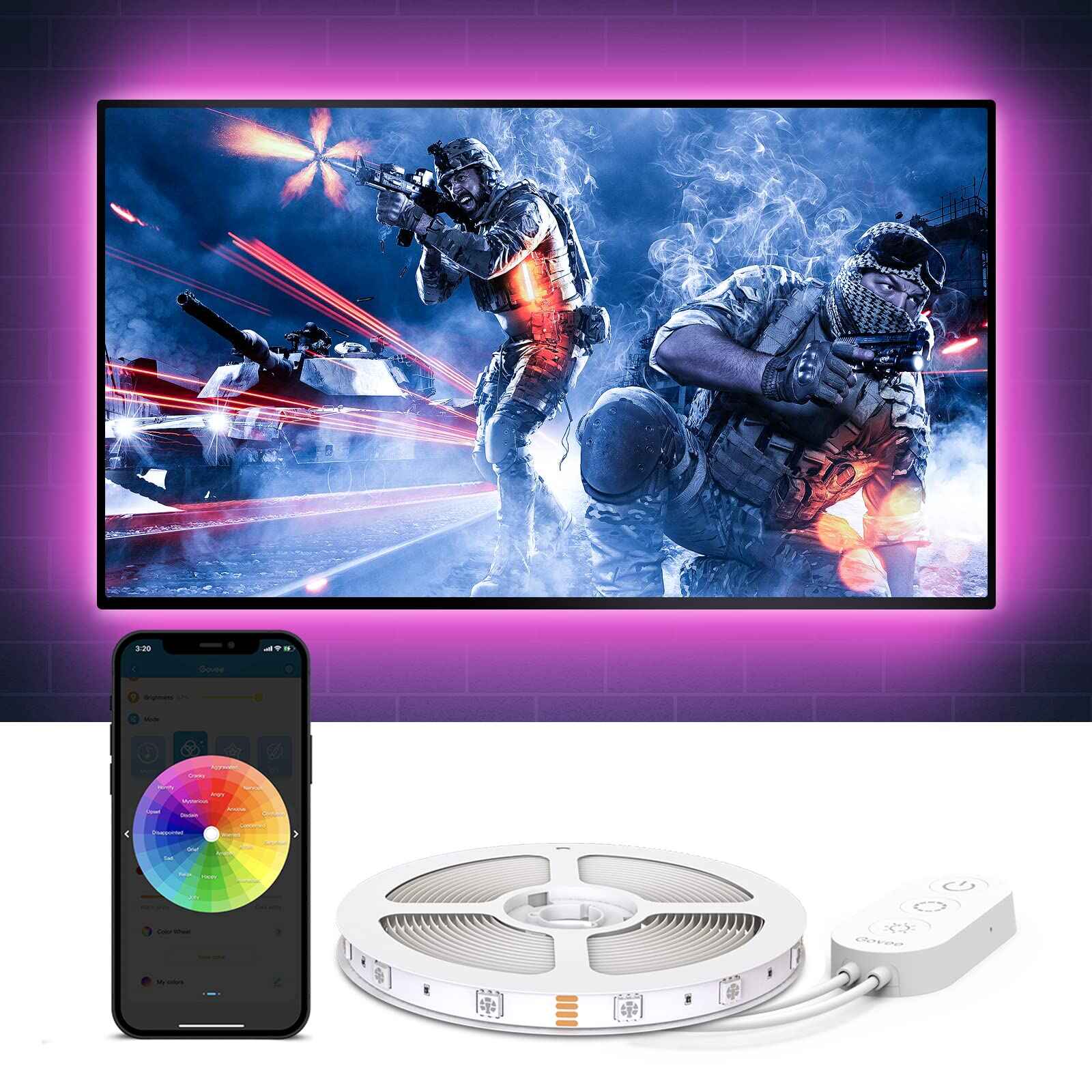Introduction
LED TVs (Light Emitting Diode TVs) have become increasingly popular in recent years due to their superior image quality, energy efficiency, and sleek designs. These advanced television sets use light-emitting diodes to display images on the screen. However, some individuals have reported experiencing eye discomfort or strain after prolonged use of LED TVs. In this article, we will explore the reasons behind why LED TVs might hurt your eyes and provide tips on how to prevent eye strain while enjoying your favorite shows or movies.
LED TVs are a type of flat-screen television that uses a backlighting system to illuminate the screen. Unlike traditional liquid crystal displays (LCDs) that rely on cold cathode fluorescent lamps (CCFL) for backlighting, LED TVs use light-emitting diodes for this purpose. These tiny diodes emit bright light when an electrical current passes through them, resulting in vibrant and vivid images.
While LED TVs offer several advantages over older TV technologies, such as improved color saturation, higher contrast ratios, and thinner profiles, some people may experience eye discomfort while watching content on these screens for extended periods of time. The main factors that contribute to eye strain when using LED TVs include blue light emission, flickering, glare and reflections, and improper viewing distance.
Blue light emission is one of the primary culprits behind eye strain from LED TVs. LED screens emit a higher amount of blue light compared to older display technologies. Blue light has a shorter wavelength and higher energy level, which can reach deeper into the eye and potentially cause damage to the retinal cells. Prolonged exposure to blue light can lead to digital eye strain, characterized by symptoms such as dryness, irritation, blurred vision, and eye fatigue.
In addition to blue light, flickering is another factor associated with eye strain from LED TVs. Although the human eye cannot detect the flicker caused by refresh rates, prolonged exposure to flickering screens can lead to eye discomfort, headaches, and even migraines for some individuals. Low refresh rates or inconsistent backlight intensity can contribute to this problem.
Glare and reflections from the glossy screens of LED TVs can also cause eye strain. When there is excessive external light or bright objects in the surroundings, they can create reflections on the screen, leading to a loss of image clarity and causing eye strain. Similarly, glare from indoor lighting sources can reflect off the screen, further exacerbating the problem.
Lastly, improper viewing distance can contribute to eye discomfort when using LED TVs. Sitting too close to the screen or being positioned at an awkward angle can strain the eye muscles as they continuously adjust focus and follow the on-screen action. It is important to maintain an optimal viewing distance and position to prevent eye strain.
What is LED TV?
LED TV stands for Light Emitting Diode TV, which is a type of television display technology. In an LED TV, the display panel is backlit using an array of light-emitting diodes (LEDs). These LEDs emit light when an electric current passes through them, creating the images we see on the screen.
LED TVs are a newer and more advanced television technology compared to traditional LCD (Liquid Crystal Display) TVs. LCD TVs use fluorescent tubes called Cold Cathode Fluorescent Lamps (CCFLs) as the backlight source. In contrast, LED TVs utilize light-emitting diodes, which offer several advantages over CCFLs.
One of the main benefits of LED TVs is their superior picture quality. LED backlighting allows for better control over the brightness and contrast levels of the screen. This results in deeper blacks, brighter whites, and more vibrant colors, enhancing the overall viewing experience.
LED TVs are also more energy-efficient compared to LCD TVs. LED backlighting requires less power consumption, which translates to lower electricity bills. Additionally, LED TVs have a longer lifespan than LCD TVs, ensuring years of use without the need for frequent repairs or replacements.
There are two main types of LED TVs: edge-lit and direct-lit. In edge-lit LED TVs, the LEDs are placed around the edges of the display panel. The light is then spread across the screen using a light guide plate or a diffuser. This design allows for thin and lightweight TVs with slim bezels.
On the other hand, direct-lit LED TVs have LEDs positioned directly behind the display panel. This provides more precise control over the backlighting, resulting in better overall uniformity and local dimming capabilities. Direct-lit LED TVs are often found in high-end models, offering enhanced image quality and contrast.
In recent years, LED TV technology has continued to evolve. Manufacturers have introduced new advancements such as OLED (Organic Light Emitting Diode) TVs, which use organic compounds to emit light and offer even better picture quality and contrast. However, traditional LED TVs still remain a popular choice due to their affordability and excellent performance.
When shopping for an LED TV, it is important to consider factors such as the screen size, resolution (Full HD, 4K, or 8K), additional features (smart TV capabilities, built-in streaming apps, etc.), and budget. Understanding the technology behind LED TVs can help you make an informed decision and find the perfect television for your entertainment needs.
How does LED TV work?
LED TVs (Light Emitting Diode TVs) utilize a complex system of technology to produce the images we see on the screen. Understanding how LED TVs work involves delving into the processes of backlighting, color reproduction, and pixel control.
The key component of an LED TV is the backlighting system. Unlike older TV technologies that use Cold Cathode Fluorescent Lamps (CCFLs) to illuminate the screen, LED TVs employ an array of light-emitting diodes (LEDs) as the light source. These LEDs are positioned either around the edges of the display panel (edge-lit) or directly behind it (direct-lit).
When an electrical current passes through the LEDs, they emit bright white light. This light is then dispersed evenly across the screen using various techniques, such as a light guide plate or a diffuser. The role of the backlight is to provide consistent and uniform illumination for the pixels on the screen.
The pixels in an LED TV consist of tiny dots that make up the image. Each pixel can emit its own light and display a specific color. The ability to control the intensity and color of each individual pixel is what gives LED TVs their exceptional image quality and color reproduction.
To create different colors, LED TVs use a technique called color mixing. The LEDs in the backlighting system emit light in the three primary colors: red, green, and blue (RGB). By varying the intensity of each color, the TV can create a wide range of hues and shades. Through a process called additive color mixing, the combination of these primary colors can produce virtually any color visible to the human eye.
The pixels on the screen are arranged in a grid-like pattern, with thousands or millions of them making up the entire display. By manipulating the brightness and color output of each pixel, the TV can create the specific images and videos we see. This process occurs at an incredibly fast rate, usually measured in milliseconds, to provide smooth and fluid motion on the screen.
In addition to backlighting and pixel control, LED TVs also incorporate various technologies to enhance the viewing experience. These may include local dimming, which dynamically adjusts the brightness of specific areas on the screen to improve contrast and black levels, and higher refresh rates, which reduce motion blur and enhance the sharpness of fast-moving scenes.
Overall, LED TVs work by utilizing an array of LEDs to backlight the screen and control each individual pixel’s brightness and color output. This combination of backlighting, color mixing, and pixel control enables LED TVs to deliver vibrant, detailed, and immersive visuals for an exceptional viewing experience.
Why does LED TV hurt my eyes?
While LED TVs offer several advantages in terms of image quality and energy efficiency, some individuals may experience eye discomfort or strain when using these TVs for extended periods of time. There are several factors that contribute to why LED TVs may hurt your eyes, including blue light emission, flickering, glare and reflections, and improper viewing distance.
One of the primary reasons LED TVs can cause eye strain is the emission of blue light. LED screens emit a higher amount of blue light compared to older display technologies. Blue light has a shorter wavelength and higher energy level, which can reach deeper into the eye and potentially cause damage to the retinal cells. Prolonged exposure to blue light can lead to digital eye strain, also known as computer vision syndrome, characterized by symptoms such as dryness, irritation, blurred vision, and eye fatigue.
Flickering is another factor associated with eye strain from LED TVs. Although the human eye cannot detect the flicker caused by refresh rates, prolonged exposure to flickering screens can lead to eye discomfort, headaches, and even migraines for some individuals. Low refresh rates or inconsistent backlight intensity can contribute to this problem. It is recommended to choose LED TVs with higher refresh rates to minimize the chances of flickering.
Glare and reflections from the glossy screens of LED TVs can also cause eye strain. When there is excessive external light or bright objects in the surroundings, they can create reflections on the screen, leading to a loss of image clarity and causing eye strain. Similarly, glare from indoor lighting sources can reflect off the screen, further exacerbating the problem. It is advisable to position the TV in a location that minimizes glare and avoid using bright overhead lights or open windows behind the TV.
Improper viewing distance is another factor that can contribute to eye discomfort when using LED TVs. Sitting too close to the screen or being positioned at an awkward angle can strain the eye muscles as they continuously adjust focus and follow the on-screen action. It is important to maintain an optimal viewing distance, usually recommended to be about twice the diagonal screen size, to prevent eye strain.
To minimize eye strain when using an LED TV, there are several preventative measures you can take. One option is to use a blue light filter or screen protector to reduce the amount of blue light emitted by the TV. These filters can help alleviate the symptoms of digital eye strain. Additionally, adjusting the TV’s brightness and contrast settings to optimal levels, reducing screen glare, and taking regular breaks from screen time can all help alleviate eye strain.
It is worth noting that individual sensitivity to the factors mentioned above may vary. Some people may be more prone to eye strain from LED TVs than others. If you experience persistent eye discomfort or significant eye strain, it is advisable to consult an eye care professional for further guidance and recommendations.
Blue light emission
One of the primary reasons LED TVs can cause eye strain is due to the emission of blue light. LED screens emit a higher amount of blue light compared to older display technologies. Blue light is a high-energy light on the visible spectrum, with a shorter wavelength and higher frequency.
When we are exposed to blue light, particularly in excessive amounts or over prolonged periods, it can have negative effects on our eyes and overall well-being. The eye’s natural filters are not efficient at blocking blue light, allowing it to reach the retina. Prolonged exposure to blue light can potentially cause damage to the retinal cells, leading to an increased risk of conditions such as macular degeneration.
Excessive blue light exposure from LED TVs can also lead to a condition called Digital Eye Strain, often referred to as computer vision syndrome. Symptoms of digital eye strain include dry eyes, eye irritation, blurred vision, headache, and eye fatigue. As LED TVs become more prevalent in our daily lives, the likelihood of experiencing these symptoms increases.
Blue light also affects the body’s production of melatonin, a hormone that helps regulate sleep-wake cycles. Exposure to blue light, particularly in the evening or before bedtime, can suppress melatonin production, making it more difficult to fall asleep or get restful sleep. Disrupted sleep patterns can have a negative impact on overall health and well-being.
To mitigate the potential harmful effects of blue light from LED TVs, various solutions can be implemented. One option is to use a blue light filter or screen protector specifically designed for LED TVs. These filters reduce the amount of blue light emitted by the screen, potentially easing eye strain and minimizing the disruption to sleep patterns.
Another approach is to adjust the color temperature settings on the TV. Most LED TVs offer various preset picture modes, such as “Cinema,” “Game,” or “Standard,” which can be adjusted to reduce the blue light emitted. Some TVs also have built-in blue light reduction features that can be activated to minimize the emission of blue light without compromising the overall picture quality.
In addition, it is recommended to limit screen time before bedtime to allow the body to naturally adjust its melatonin levels and promote better sleep. Creating a comfortable viewing environment by reducing screen glare, dimming surrounding lights, and taking regular breaks from screen usage can further alleviate the potential eye strain caused by blue light exposure.
While blue light emission from LED TVs can contribute to eye strain and sleep disturbances, it is important to note that not all blue light is harmful. Blue light exposure during the day is essential for regulating our circadian rhythm and boosting alertness. It is the excessive and prolonged exposure to blue light, particularly during evening hours, that can pose potential risks.
It is always a good practice to be mindful of screen usage, especially when it comes to LED TVs, and to incorporate healthy habits, such as maintaining proper viewing distances, taking breaks, and ensuring adequate lighting in the viewing area. These measures can help minimize the potential negative effects of blue light and promote overall eye health and well-being.
Flickering
Flickering is another factor that can contribute to eye strain when using LED TVs for extended periods. Although the human eye cannot detect the flicker caused by the rapid on-off cycles of the LEDs, the inconsistency in backlight intensity can still impact some individuals and lead to eye discomfort. This phenomenon is more prevalent in LED TVs with low refresh rates or poor backlight control.
The refresh rate of an LED TV refers to how many times the image on the screen is refreshed per second. It is measured in Hertz (Hz). A higher refresh rate means a smoother and more fluid visual experience. LED TVs with lower refresh rates, typically around 60Hz, may exhibit noticeable flickering for some individuals, especially during fast-paced scenes or when viewing content with a lot of motion.
Flickering can strain the eyes because they have to constantly readjust and adapt to the fluctuating backlight intensity. This can cause eye fatigue, headaches, and even migraines in sensitive individuals. The effects of flickering can be more pronounced in dimly lit rooms or in conditions where the eyes are exposed to prolonged screen time without breaks.
To minimize the potential eye strain caused by flickering LED TVs, it is advisable to opt for models with higher refresh rates. LED TVs with a refresh rate of 120Hz or higher are widely available in the market and can significantly reduce visible flickering. These TVs ensure smoother transitions between frames, resulting in a more comfortable viewing experience.
Another solution to reduce flickering is to enable or adjust the TV’s motion interpolation feature, commonly referred to as motion smoothing or motion interpolation. This technology creates intermediate frames between the actual frames of the content being displayed. By filling in the gaps, motion interpolation reduces the perception of flickering and produces smoother on-screen motion.
In some cases, flickering may also be caused by inconsistent backlight control. This can occur when the LED backlight does not maintain a consistent brightness level across the entire screen. Areas with uneven backlighting can create flickering or visual inconsistencies. LED TVs that offer local dimming technology can help mitigate this issue. Local dimming allows specific areas of the screen to dim or brighten independently based on the content being displayed, enhancing contrast and minimizing flickering.
It is important to note that while flickering can contribute to eye strain, not all individuals are equally affected. Some people may be more sensitive and prone to experiencing eye discomfort or headaches from flickering screens, while others may not notice any significant effects. Understanding one’s own susceptibility to flickering can help in selecting an LED TV that minimizes this potential issue.
Overall, flickering can be a contributing factor to eye strain when using LED TVs. Opting for models with higher refresh rates, enabling motion interpolation, and considering LED TVs with local dimming technology are all measures that can help reduce or eliminate the visible flickering, ensuring a more pleasant and comfortable viewing experience.
Glare and reflections
Glare and reflections from the glossy screens of LED TVs can contribute to eye strain and discomfort. When there is excessive external light or bright objects in the surroundings, they can create reflections on the TV screen, leading to a loss of image clarity and causing eye strain. Similarly, glare from indoor lighting sources can reflect off the screen, further exacerbating the problem.
The glossy screens commonly found on LED TVs are designed to enhance contrast and provide a more vibrant viewing experience. However, these screens are also prone to reflecting light sources, which can be distracting and uncomfortable to the eyes. The reflections and glare can make it more difficult to see the content on the screen clearly, leading to eye strain as the eyes continuously adjust their focus and attempt to overcome the obstructions.
There are several measures that can be taken to minimize the impact of glare and reflections on LED TVs. One approach is to control the lighting in the room. By reducing the intensity of overhead lights or avoiding bright spotlights directed towards the screen, the amount of glare and reflections can be significantly reduced. Using indirect or diffused lighting can create a more comfortable environment for viewing.
Another solution is to position the LED TV strategically to minimize the impact of external light sources. Avoid placing the TV directly opposite windows or other bright light sources that may cause reflections on the screen. Adjusting the angle of the TV or using curtains or blinds to block external light can also be effective in reducing glare and reflections.
Using anti-glare or matte screen protectors can help reduce the effects of reflections on the screen. These protectors have a specialized coating that diffuses the light and reduces glare. They can be easily applied to the screen of the LED TV and can significantly improve visibility by minimizing distracting reflections.
Another consideration is the choice of the TV’s display mode. Most LED TVs offer different picture modes, such as cinema, standard, sports, or game mode. Experimenting with these modes and adjusting the brightness and contrast settings can help reduce the visibility of reflections and improve the overall viewing experience. Some TVs also have specific modes or features designed to minimize glare, which can be worth exploring.
Lastly, choosing an LED TV with a matte or semi-gloss screen finish instead of a glossy one can help minimize the impact of reflections and reduce eye strain. These types of screens have a diffused surface that disperses light, making it less prone to reflecting external light sources. Matte screens are also less susceptible to fingerprints and smudges, maintaining better image clarity.
By controlling lighting, positioning the TV strategically, using screen protectors, adjusting display settings, and choosing the right screen finish, it is possible to minimize the effects of glare and reflections on LED TVs. By reducing these visual obstructions, viewers can enjoy a more comfortable and immersive viewing experience without the strain caused by excessive glare and reflections.
Improper viewing distance
Proper viewing distance is crucial to prevent eye strain when using LED TVs. Sitting too close to the screen or positioning oneself at an awkward angle can strain the eye muscles as they continuously adjust focus and follow the on-screen action. Therefore, maintaining an optimal viewing distance is essential for a comfortable and enjoyable viewing experience.
The optimal viewing distance for an LED TV is typically recommended to be about twice the diagonal screen size. This distance allows for a wider field of view and allows the eyes to comfortably take in the entire screen without excessive strain. Sitting too close to the screen, on the other hand, can cause the eyes to work harder to scan the entire display, leading to eye fatigue and discomfort.
Another factor to consider is the screen resolution of the LED TV. Higher-resolution screens, such as 4K or 8K, offer greater pixel density, resulting in sharper and more detailed images. However, this increased detail may be lost if the viewer is positioned too far from the screen. Conversely, sitting too close to a lower-resolution screen may make individual pixels more noticeable, potentially causing eye strain or discomfort.
It is also important to ensure that the LED TV is positioned at a suitable height. Placing the TV too high or too low can contribute to neck strain and discomfort as viewers have to crane their necks or tilt their heads to see the screen properly. The center of the screen should ideally be at eye level when seated comfortably to minimize strain on the neck and upper body.
Using an adjustable TV stand or wall mount can help achieve the optimal viewing height. They allow for easy adjustments to find the most comfortable position for viewing. Tilting the TV slightly downwards can also help reduce the risk of neck strain by aligning the screen with the natural line of sight.
In addition to the distance and height considerations, it’s worth noting that viewing angles can also affect the comfort and clarity of the displayed content. LED TVs typically offer wide viewing angles, meaning the image remains clear and consistent even when viewed from the side. However, extreme side viewing or sitting at too steep an angle may result in distorted colors and reduced image quality. Positioning oneself front and center, as close to the center of the screen as possible, ensures the best overall viewing experience.
By maintaining an appropriate viewing distance, positioning the TV at the correct height, and sitting at a suitable angle, viewers can reduce eye strain and discomfort associated with improper viewing distances. It is important to find a balance that provides a comfortable and immersive experience without imposing unnecessary strain on the eyes, neck, or body.
How to prevent eye strain from LED TV?
Preventing eye strain when using LED TVs involves implementing a combination of measures to optimize the viewing experience and minimize the potential negative effects on the eyes. By following these guidelines, viewers can enjoy their favorite shows and movies without experiencing discomfort or eye strain.
1. Maintain an optimal viewing distance: Sit at a distance that is approximately twice the diagonal screen size. This allows for a wider field of view and prevents excessive strain on the eyes. Sitting too close can make the eyes work harder to scan the entire screen, while sitting too far can reduce the visibility of details and increase eye fatigue.
2. Adjust the TV’s brightness and contrast: Find the optimal settings that provide a comfortable level of brightness without causing eye strain. Setting the brightness too high can result in glare and discomfort, while setting it too low can strain the eyes to see the content clearly. Adjust the contrast to achieve a balance between bright whites and deep blacks for better image quality.
3. Reduce screen glare: Position the LED TV away from direct light sources or windows to minimize glare on the screen. Use curtains or blinds to control the amount of incoming light. Consider using anti-glare screen protectors or applying matte screen films to reduce reflections and improve visibility.
4. Take regular breaks: Engaging in prolonged TV viewing without breaks can lead to eye strain. Follow the 20-20-20 rule, which suggests taking a 20-second break every 20 minutes to look at an object at least 20 feet away. This helps relax the eye muscles and reduce fatigue.
5. Control the lighting in the room: Ensure appropriate ambient lighting by adjusting the room’s lighting to match the brightness of the screen. Avoid overly bright or dim lighting conditions, as extreme contrasts can strain the eyes. Use indirect lighting or dimmers to create a comfortable viewing environment.
6. Use blue light filters: Blue light emitted by LED screens can contribute to eye strain and disrupt sleep patterns. Consider using blue light filters or screen protectors that reduce the amount of blue light emitted. These filters can help alleviate digital eye strain and promote better sleep quality.
7. Position the TV appropriately: Place the TV at eye level or slightly below eye level to maintain a natural and comfortable viewing position. Adjust the TV’s angle and tilt to reduce neck strain and achieve optimal visibility. Mounting the TV on an adjustable wall mount or using a stand that allows height adjustments can help achieve the desired positioning.
8. Keep the viewing area well-ventilated: Ensure that the room where the LED TV is located is adequately ventilated. Dry air can cause eye dryness and irritation, which can contribute to eye strain. Use a humidifier or air purifier if necessary to maintain suitable humidity levels.
9. Get regular eye exams: Regular eye exams are essential for maintaining optimal eye health. Eye exams can detect any underlying vision problems or changes that may contribute to eye strain. An eye care professional can provide personalized recommendations based on your specific needs and help you address any eye-related concerns.
By implementing these preventive measures, individuals can enjoy their LED TVs while minimizing the risk of eye strain and discomfort. Being mindful of viewing habits and taking proactive steps to ensure a comfortable and healthy viewing environment can enhance the overall enjoyment and longevity of watching television.
Conclusion
LED TVs have revolutionized the way we experience television, offering superior image quality, energy efficiency, and sleek designs. However, prolonged and improper use of LED TVs can lead to eye strain and discomfort. Understanding the factors that contribute to eye strain, such as blue light emission, flickering, glare and reflections, and improper viewing distance, is crucial in taking preventive measures.
Blue light emission from LED TVs can potentially cause eye damage and digital eye strain. Using blue light filters or screen protectors, adjusting the color temperature settings, and practicing healthy screen habits can help reduce exposure to blue light and minimize eye strain.
Flickering can strain the eyes due to the inconsistent backlight intensity of LED TVs. Opting for models with higher refresh rates, enabling motion interpolation, and considering TVs with local dimming technology can alleviate the effects of flickering and provide a more comfortable viewing experience.
Glare and reflections from the glossy screens of LED TVs contribute to eye strain. Controlling the lighting in the room, positioning the TV strategically, using screen protectors, adjusting display settings, and opting for matte or semi-gloss screen finishes can help minimize the impact of glare and reflections.
Improper viewing distance compromises visual comfort. Maintaining an optimal viewing distance, positioning the TV at the correct height, and sitting at suitable angles are important in preventing eye strain. By adhering to these guidelines, viewers can minimize eye fatigue and discomfort while enjoying their favorite content.
In addition to these preventive measures, taking regular breaks, adjusting room lighting, using blue light filters, and getting regular eye exams are essential in maintaining healthy eye habits and preventing eye strain from LED TVs.
Remember, everyone’s eyes are unique, and individual requirements may vary. It’s important to listen to your body and make adjustments that work best for you. By implementing these tips and being mindful of your viewing habits, you can enhance your LED TV experience while safeguarding your eye health.

























